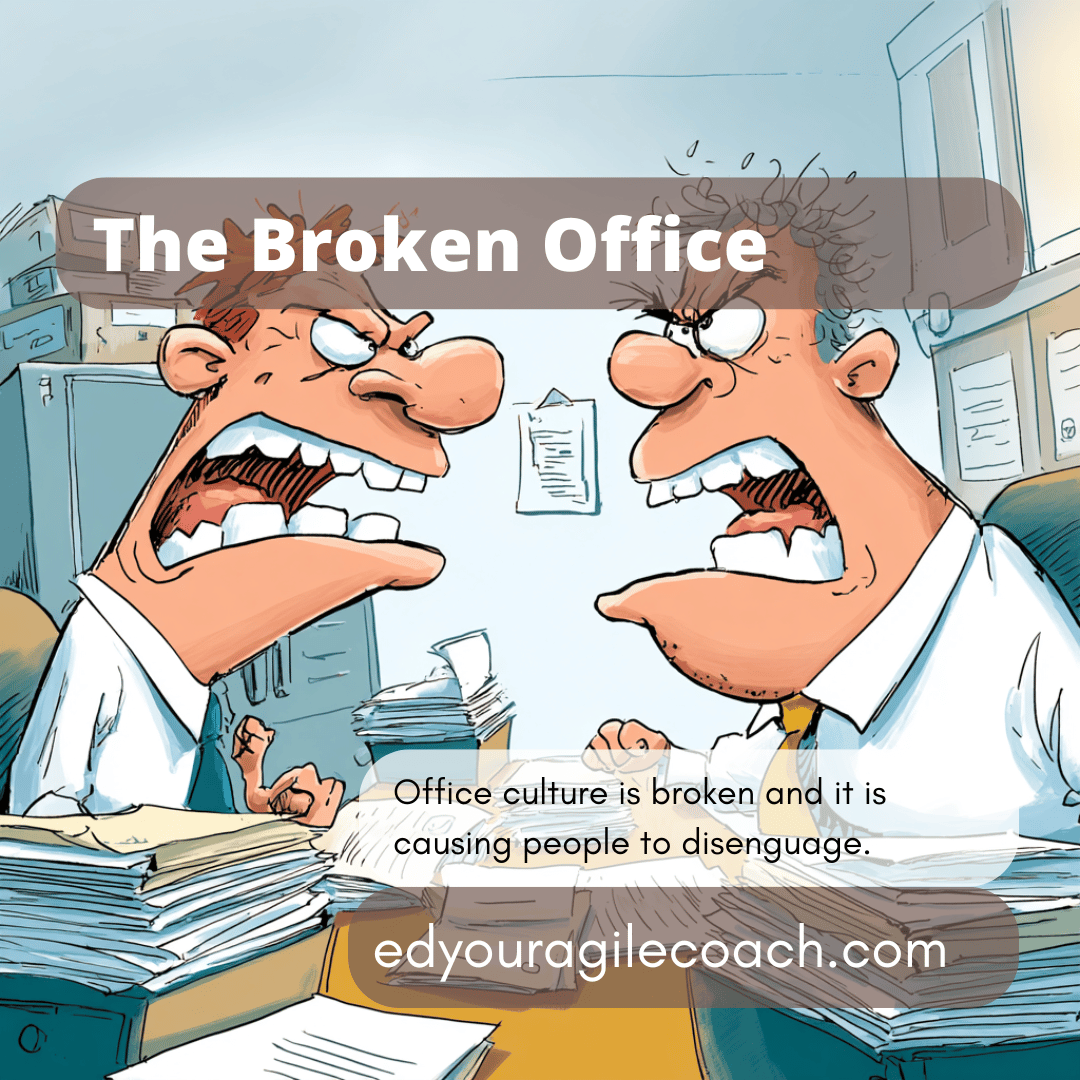Change Agents vs. Corporate Inertia.

Working at a large corporation feels like traveling back in time. Instead of being a twenty-first-century knowledge worker, you often feel like a Scottish serf covered in mud, cutting peat for your lord's fireplace. Office workers are all forced to obey the office's strict pecking order and its unwritten rules, which somehow matter more than our actual job. Corporate antibodies quickly destroy anything that upsets this feudal structure, treating it like a virus. It is a wonder that anything gets accomplished in the corporate world. Having suffered this fate more than most, I want to discuss how bureaucracy and red tape act as friction in your organization.
A TikTok personality I respect, Zigurd Mednieks, stated that many business leaders are relying on "process arbitrage" to sustain their organizations. Suppose you manufacture candy, and you must have the correct ratio of flour, sugar, and flavoring to create a successful product. An experienced flavor chemist or line worker would understand those formulas, but they take years of experience and expensive training. People like this are also costly to hire. Thus, the folks in finance and the executive wing decide to put policies and procedures in place to create their candy. In short, they write a recipe explaining how to make the product. It makes the work consistent, and as long as nothing changes, anyone can do the job. It also means that more expensive employees can be replaced, provided the cheaper workers can follow directions.
The above kind of bet is made daily at every Fortune 500 company internationally. Processes are being put in place to replace personal judgment. Artificial Intelligence agents are pretty good at following directions. These systems do not require health care, coffee breaks, or union formation. It is why so many CEOs are interested in Artificial Intelligence at their organizations. The drawback is that all this automation and process makes it impossible to innovate or address change. It creates bizarre situations where everyone continues to do the same thing even though they know it will ultimately destroy the company and their careers.
Most of my career has been spent in the complex world of corporate life. Ultimately, people pay for their own destruction by getting paid to do certain things. Inerita and process arbitrage are the only things keeping the business alive. I fell in love with Agile and change management for this very reason. Here, people were attempting to make a difference in organizations and help them grow and develop.
Currently, times are tough for corporations because the high interest rates, inflation, and uncertainty of this business climate have overstressed the executive class. It feels impossible to conduct business in this type of capricious environment. When times get tough, business leaders stockpile control. Organizations are cutting payrolls to the bone, while they scrutinize every penny and behavior within their ranks. I suspect that the numerous return-to-office mandates are an attempt by business leaders to exert control over their workforce. With workers out of the office, there is a perception of a lack of control over the quality of the work. It is a false perception, but it persists.
Plenty of Agile professionals are out of work because we often are driving change and pointing out contradictions in the business. Capital One removed all of its Agile people because the bank and its leaders refused to change, feeling they were losing control of their organization. Last week, I highlighted how this often renders the careers of innovators impossible. Change is something everyone wants until they confront it in their immediate lives.
As we enter the last quarter of 2025, change agents confront resistance, inertia, and fear. I have used this time to upskill myself and ensure I possess the skills organizations are looking for. I earned a PMP and a Lean Six Sigma Green Belt because these certifications were in high demand on job requisitions. It was unnecessary credential inflation, but due to the uncertainty in the business environment, companies could afford to be more selective. I had to adapt to the times, just like my struggling business customers.
I believe that things will improve, hopefully, in the next three to five years. In the meantime, those of us in the Agile profession must continue to improve our skills, navigate the byzantine world of corporate feudal politics, and keep a stiff upper lip. We don't have any other alternative.
Until next time.




Comments ()